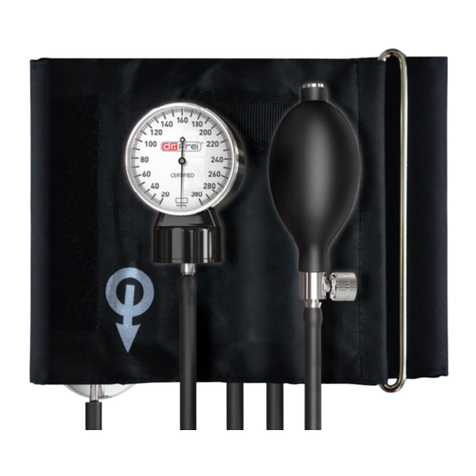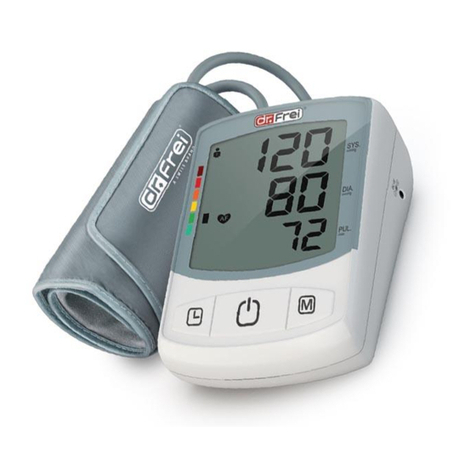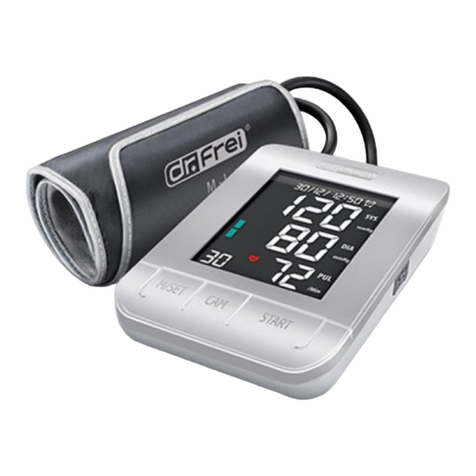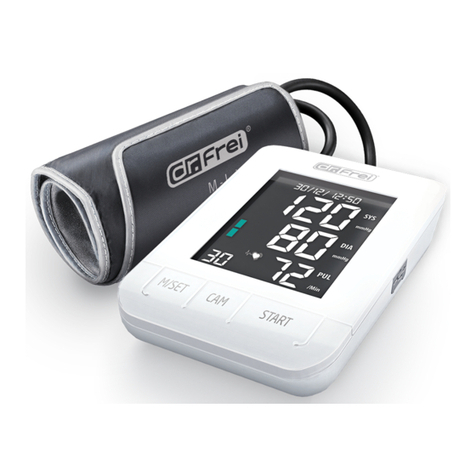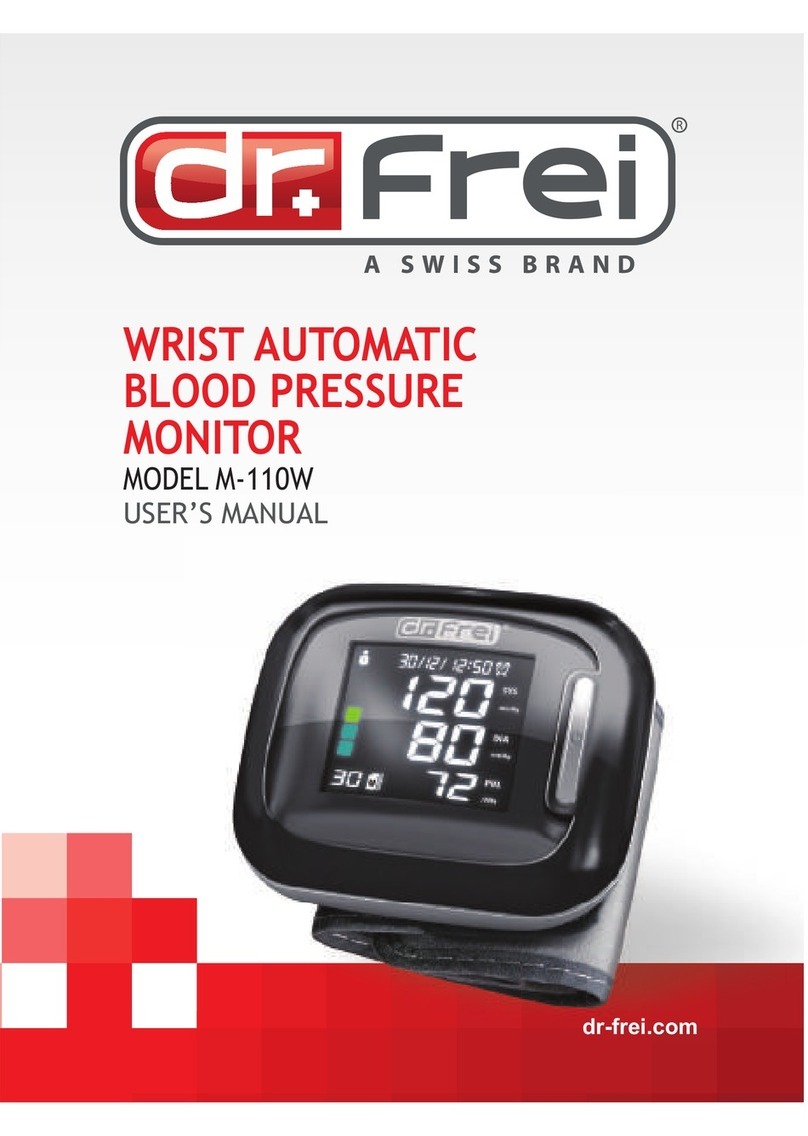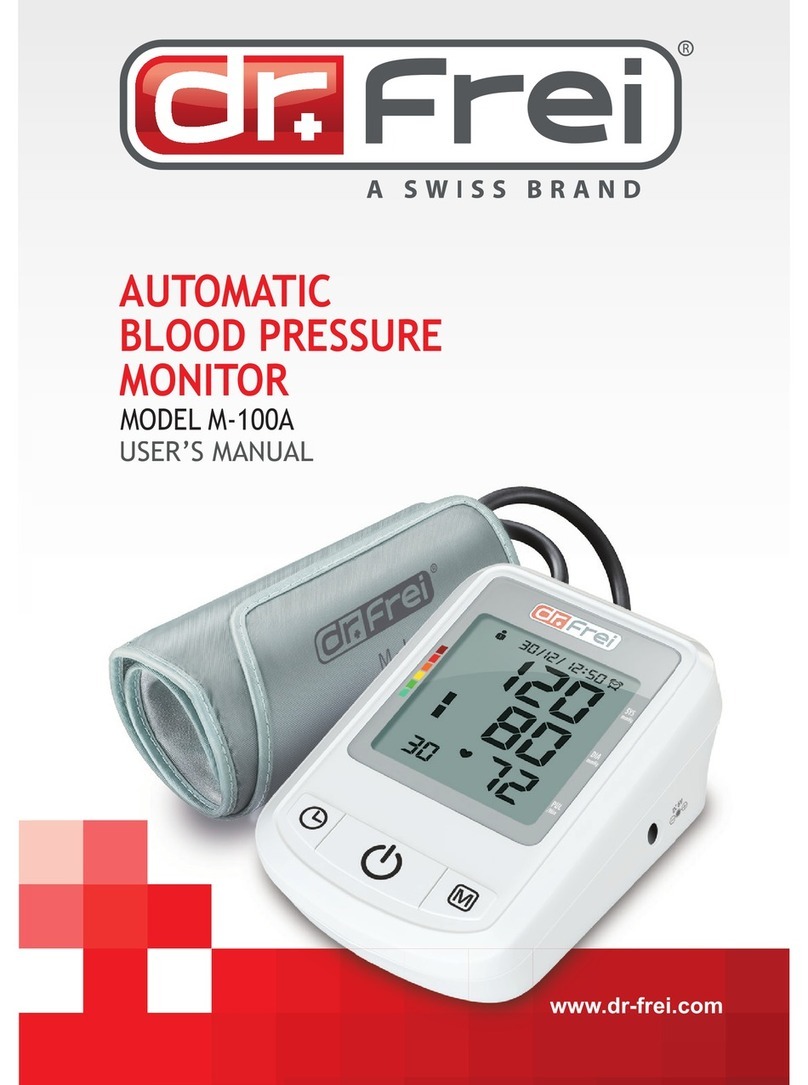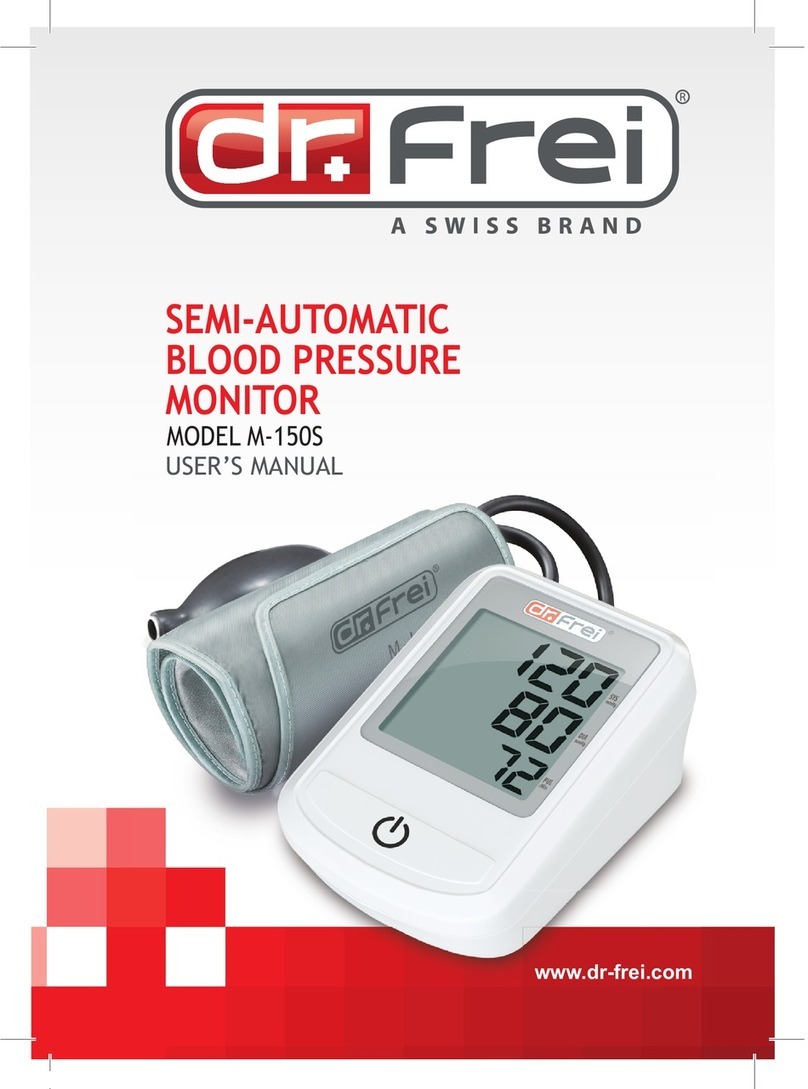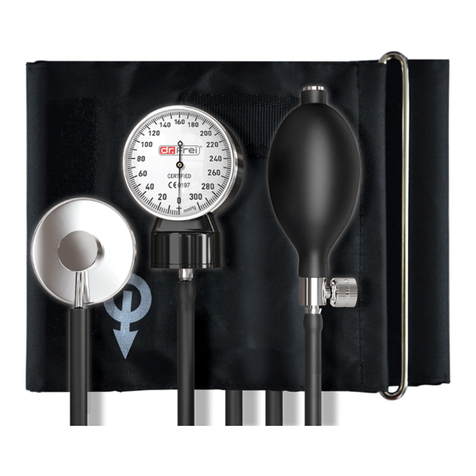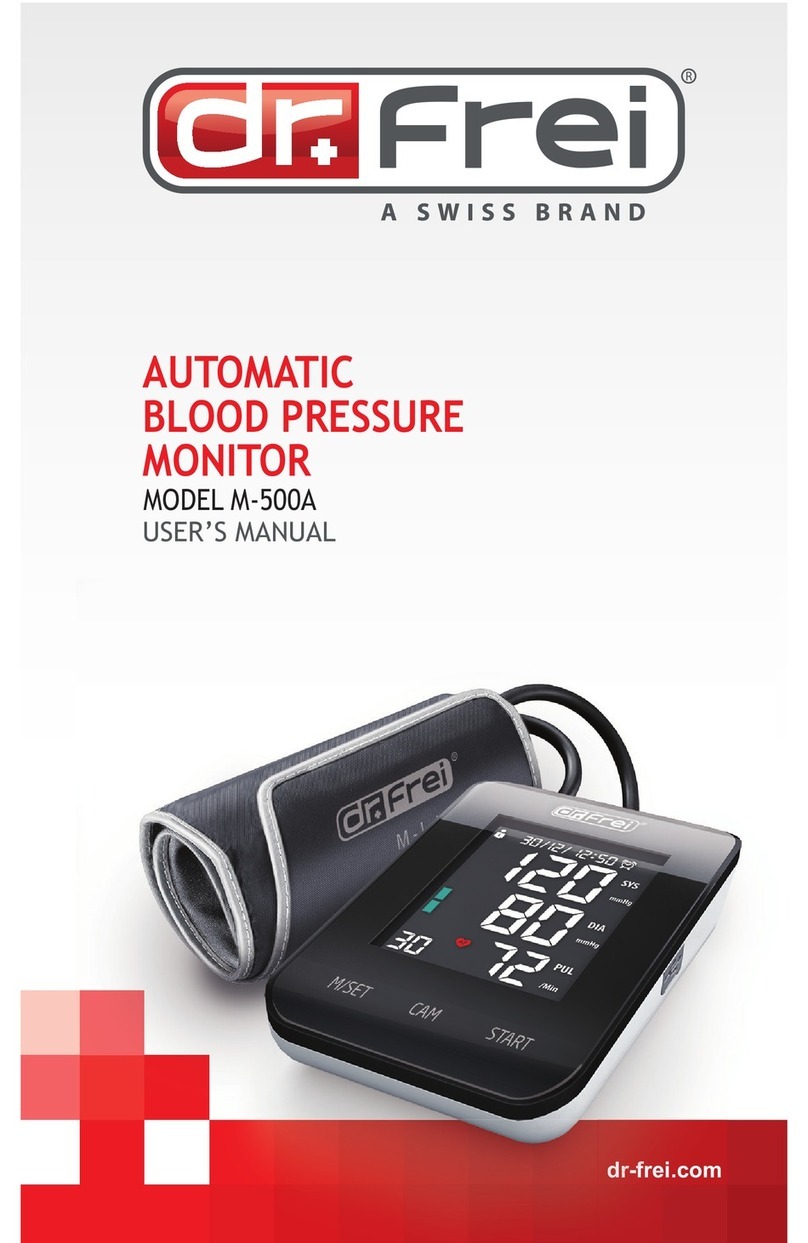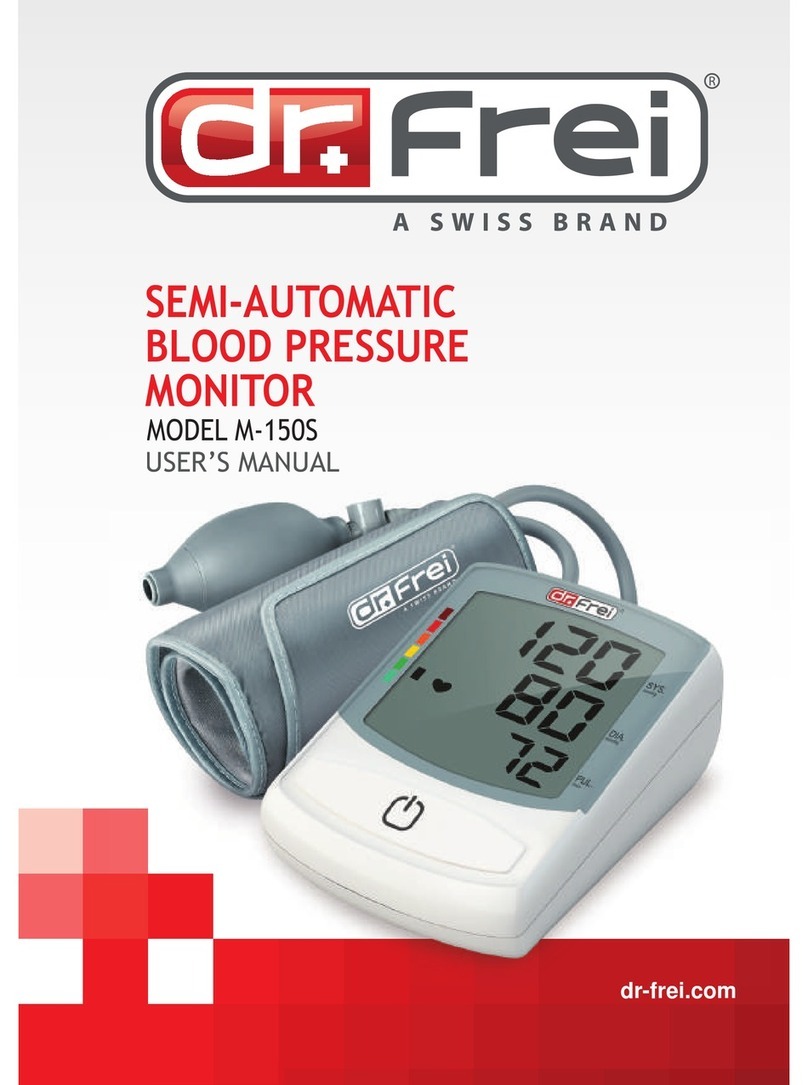
6
Note: Model A-10 cuff ts arm
circumference 25-42 cm.
For easy assembly follow
diagram.
Connect each component
securely to avoid injury and
instrument damage.
WHAT IS BLOOD PRESSURE?
Blood pressure is the force exerted on the walls of your blood vessels
as blood ows through them.
The heart is like a pump. When it contracts. or beats, it sends a surge
of blood through the blood vessels and pressure increases. This is
called systolic pressure.
When your heart relaxes between beats, your blood pressure
decreases. This is diastolic pressure. When a doctor takes your
blood pressure, he or she measures both your systolic and diastolic
pressures and records them as numbers. For example, if your blood
pressure reading is 126/76(126 over 76), your systolic is 126 and your
diastolic is 76. The numbers are calculated in millimeters of mercury
and recorded as 126/76 mmHg. Blood pressure varies during the
day. Factors inuencing your blood pressure include physical activity,
medications, and your emotional and physical condition. A single
measurement does not provide a true picture of your blood pressure.
You need to measure your blood pressure over a period of time.
IMPORTANT: CONSULT YOUR DOCTOR TO DETERMINE YOUR
